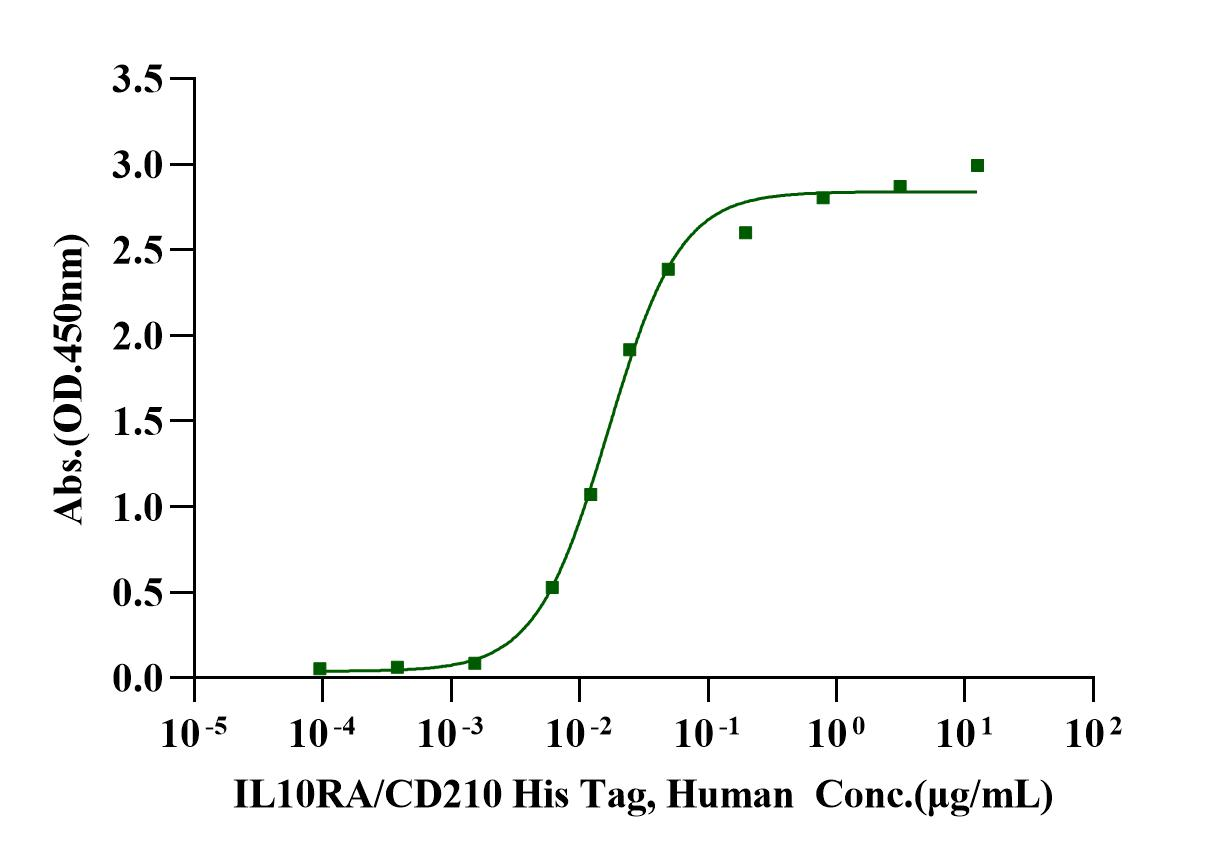His22-Asn235, with C-terminal 8*His HGTELPSPPSVWFEAEFFHHILHWTPIPNQSESTCYEVALLRYGIESWNSISNCSQTLSYDLTAVTLDLYHSNGYRARVRAVDGSRHSNWTVTNTRFSVDEVTLTVGSVNLEIHNGFILGKIQLPRPKMAPANDTYESIFSHFREYEIAIRKVPGNFTFTHKKVKHENFSLLTSGEVGEFCVQVKPSVASRSNKGMWSKEECISLTRQYFTVTNGGGSHHHHHHHH
43-55kDa
Reconstitute at 0.1-1 mg/ml according to the size in ultrapure water after rapid centrifugation.
1. Pestka, S. et al. (2004) Annu. Rev. Immunol. 22:929. 2. Manzanillo, P. et al. (2015) Trends Immunol. 36:471.
Interleukin-10 Receptor alpha (IL-10 R alpha), also known as IL-10 R1, is a 51 kDa transmembrane glycoprotein member of the class II cytokine receptor family. IL-10 R alpha is required for mediating the effects of IL-10, a critical molecule in the control of microbial infections, allergic and autoimmune inflammation, and cancer. IL-10 R alpha is the ligand specific subunit of the IL-10 receptor complex. Interleukin-10 receptor subunit alpha (IL-10 R alpha) is a cell surface receptor for the cytokine IL-10 that participates in IL-10 mediated anti-inflammatory functions, limiting excessive tissue disruption caused by inflammation. Upon binding to IL10, induces a conformational change in IL10RB, allowing IL10RB to bind IL10 as well. In turn, the heterotetrameric assembly complex, composed of two subunits of IL10RA and IL10RB, activates the kinases JAK1 and TYK2 that are constitutively associated with IL10RA and IL10RB respectively. These kinases then phosphorylate specific tyrosine residues in the intracellular domain in IL10RA leading to the recruitment and subsequent phosphorylation of STAT3.

1μg (R: reducing conditions, N: non-reducing conditions).

Immobilized IL-10, Human (Cat. No. UA040176) at 5.0μg/mL (100μL/well) can bind IL10RA/CD210 His Tag, Human (Cat. No. UA010657) with EC50 of 13.88-19.80ng/mL.